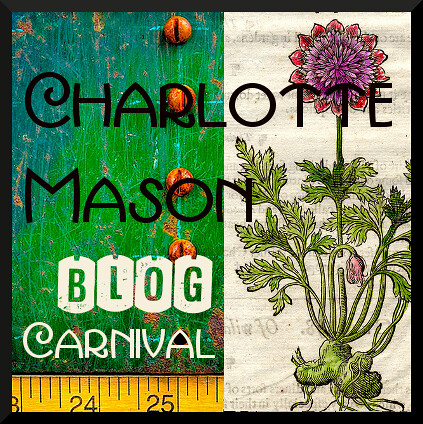The Two Main Keys to Teaching Reading
#1
#1
Make them want it.
Each child is different and so the key to their motivation will look different for each one. But whether it's a book they're just dying to read, or the reward* of a personal pan pizza, or they want to be like their big brother, or they want to learn about planets... whatever it is, let them know that their goal (of learning to read) is within their reach! Gently taunt them with it. Make them want it! Once they want it, you show them the tools. Oh, and when they want it bad, they're willing to work on it (as long as it's still fun of course! :) I seriously think that's all there is to it!
*(I do not intend to promote the use of a reward-system - as CM definitely was careful in offering *rewards* - but encouragement as you see them making an effort and wanting to learn. When you notice a developing desire to read... actively nurture it! I'm not suggesting that the reward be dangled in front of them, but actually the desire itself - carefully, appealingly remind them that if they work at it, they CAN accomplish goals set before them! We personally didn't use the personal pan pizza idea - how could we here in Peru? ;) but I know many parents who do.)
Charlotte calls it,
“...the joyous interest which is the real secret of success.”

(...while the tools are pretty much the same for each child, apart from physical issues, some may need extra practice in one or more skill areas than others...)
#2
Use interesting material.
Use interesting material.
I don't know about you, but this seems completely natural to me. Who on earth would love reading if all we had to read was dull, meaningless unrelated words. For example, imagine our first reading experience if we were given a whole page from the stocks section from NY times, full from top to bottom with letters and symbols like these:
| Canada TSX Comp. 12,658.48+ 0.45%+57.30 | Brazil Bovespa 70,033.11+ 0.72%+503.38 | Mexico Bolsa 35,378.16+ 0.73%+257.28 | Chile IPSA 40 4,798.06+ 0.10%+4.69 |
Or how about this juicy bit:
...improve the operational performance and the strategic direction for scaling up delivery of mix of anti-malaria interventions in order to reduce malaria morbidity and mortality and overall transmission.
I'd be done. It has ZERO context for me... I would despise being forced to learn to read with that! It is beside the point that the first selection contains a minimum of real words! Well, I imagine that your children are like mine in this... and not much different from us! We secure their interest and they will delight in learning to read when we present material that has beauty, meaning and context for them!
“The child cares for things, not words; his analytic power is very small, his observing faculty is exceedingly quick and keen; nothing is too small for him; he will spy out the eye of a fly; nothing is too intricate, he delights in puzzles. But the thing he learns to know by looking at it, is a thing which interests him. Here we have the key to reading. No meaningless combinations of letters, no cla, cle, cli, clo, clu... should be presented to him. The child should be taught from the first to regard the printed word as he already regards the spoken word, as the symbol of fact or idea of full of interest.” [p217]
“That's just it. Interest the child in the thing, and he soon learns the sound-sign for it – that is, it's name. Now, I maintain that, when he is a little older, he should learn the form-sign – that is, the printed word – on the same principle. It is far easier for a child to read plum-pudding than to read 'to, to', because 'plum-pudding' conveys a far more interesting idea.” [p209]
“What we want is a bridge between the child's natural interests and those arbitrary symbols with which he must become acquainted, and which, as we have seen are words, and not letters.” [p217]
In regard to one of the reading lessons Charlotte encourages us:
“To make the verses up with his own loose words will give Tommy such a delicious sense that knowledge is power, as few occasions in after life will afford. Anyway, reading is to him a delight henceforth, and it will require very bad management indeed to make him hate it.” [p220]

So, in summary... reading is nothing more than learning to recognize that written words represent the interesting things all around him. There are several basic skills required to accomplish this: Learning sounds (and subsequently building words), and recognizing common words by sight (especially rule-breakers).
We secure our child's interest in learning by early on planting and nurturing the desire to read. We encourage and further their desire by presenting them with interesting material.
Phew! I've finally made it through all the theoretical part, so next time I'll be back with the hands-on lesson part that is WAY more fun!! ;)
Our Story... I'm a failure. {part one}
Our Story... Struggle no more. {part two}
Our Story... Just relax! {part three}
Learning to Read - The Scary Myth
The Two Keys to Teaching Reading << -- You are here. :)
Playing a Foundation to Build on.
First Reading Lessons in Earnest.
















5 comments:
Amy, you are so right-on with this post. Engaging a reader is just those two things. Sounds simple enough put that way, doesn't it? Can't wait for the next posts!
So nice to know it can be SO easy! Thanks for this... it's an encouragement to me as I'm about to embark on this "teaching" to read adventure :-)
Amy, your reading series is a MUST read for us, homeschooling moms. The way you've intertwined CM writings with your own experience, your explanations and your advice will save me lots in Tylenol and tea. I should ship you some books with those savings ;-)
The problem here is that we, HS moms, think of reading as Peter O'Toole would do from Hamlet, and most of the people (most schools included), talk about level A early readers such as I see an apple, I see a banana, I see a kiwi, I like fruit!
I've noticed something, having a broad vocabulary is the best tool to reading fluently later. For that it's reading aloud what helps. When my daughter has to figure out a word and knows the fist syllable, by the context she can read a longer word than a child whose vocabulary is constrained to twaddle.
...again..."ON" Tylenol and tea...see? The prepositions "in, on, at for, to" are impossible!arghh
Oh, I've been mulling over all your ideas!! Splendid. And great timing for me -- my oldest is six and just starting to read. THANK-YOU!!
I'll be back.
~B
Oh, and soooo nice to connect via blogs. Thanks for your comments. {hug}!
Post a Comment